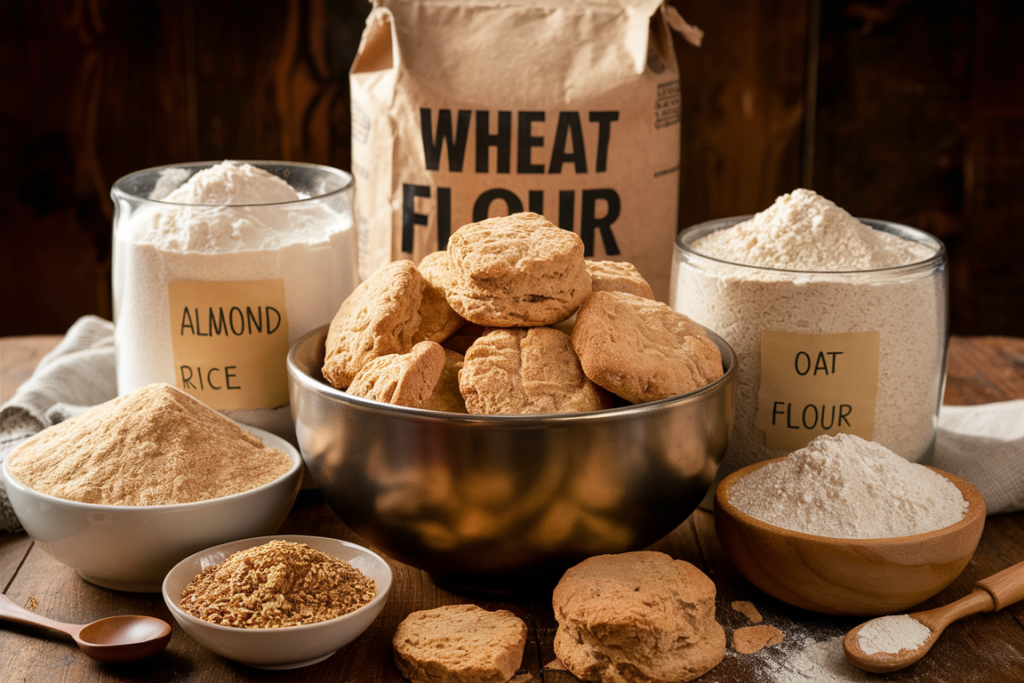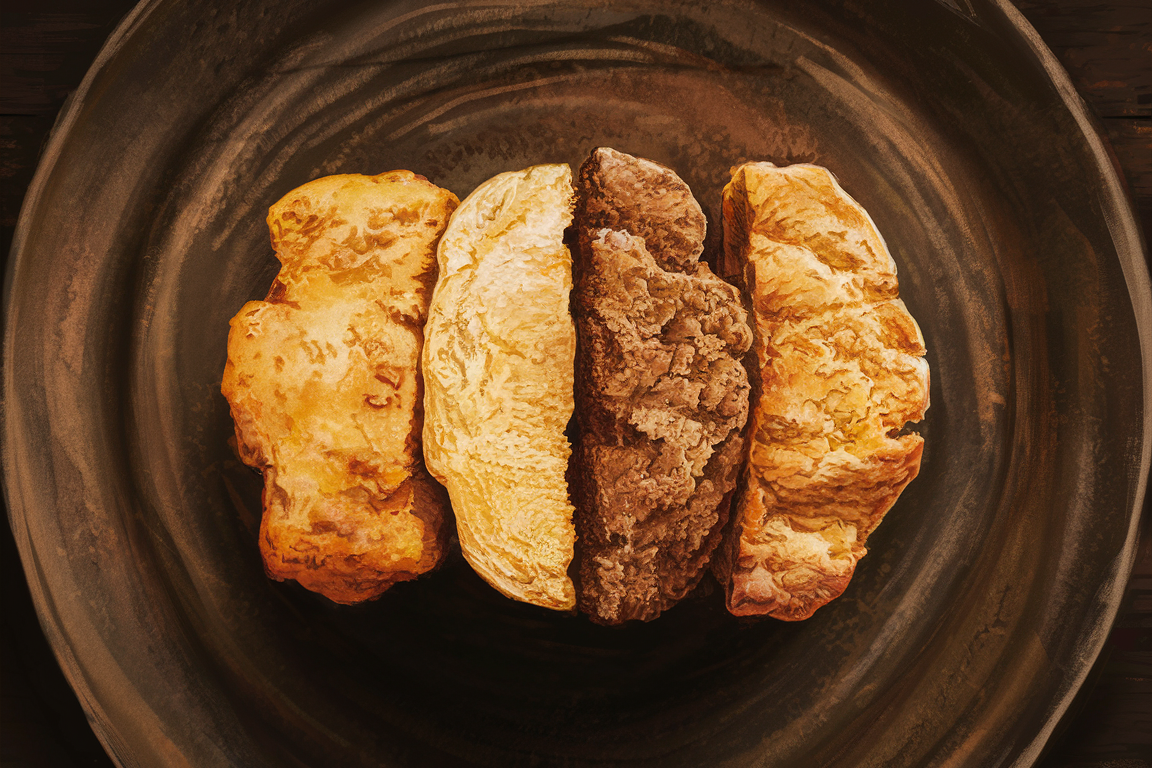Do Gluten-Free Biscuits Taste Different? Exploring Taste, Texture, and Consumer Preferences
When it comes to the world of baked goods, few debates spark as much curiosity as whether gluten-free biscuits taste different from their traditional counterparts. This article dives into the heart of that question, exploring everything from the role of gluten in baking to the unique ingredients that shape the taste and texture of gluten-free biscuits. Let’s unravel the myths and realities surrounding these treats and discover how taste perception can vary widely among consumers.
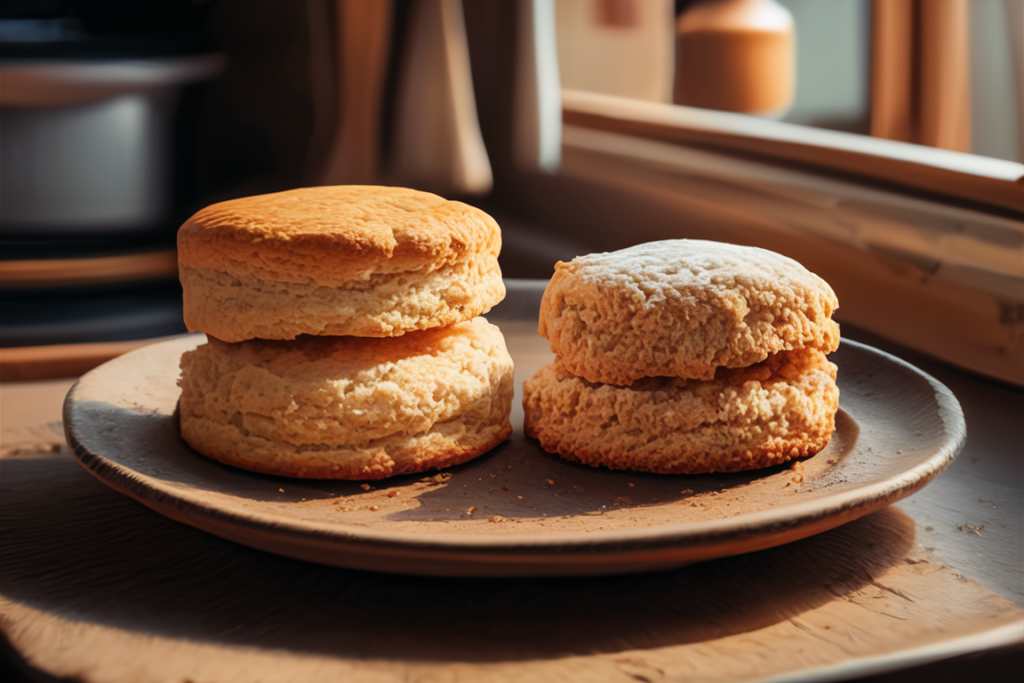
Part 1: Understanding Gluten-Free Biscuits
What Makes a Biscuit Gluten-Free?
At their core, gluten-free biscuits are those made without gluten—a protein found in wheat, barley, and rye. Instead, these biscuits rely on alternative flours like almond flour, rice flour, or oat flour, which lend unique characteristics to the final product. But why do people opt for gluten-free? For individuals with celiac disease or gluten sensitivities, avoiding gluten isn’t just a choice—it’s a necessity.
Why Gluten-Free Baking is Different
Here’s the thing about gluten: it’s the magic ingredient that gives traditional biscuits their stretchiness and structure. When you remove it, you lose the elasticity that holds everything together. That’s where binders like xanthan gum and guar gum step in, helping to mimic gluten’s effects. However, the absence of gluten can still subtly impact flavor, which often raises the question, “Do gluten-free biscuits taste different?”
Key Ingredients in Gluten-Free Biscuits
Gluten-free recipes typically call for a mix of flours to achieve the desired taste and texture. Let’s take a closer look:
- Almond Flour: Offers a nutty, rich flavor but can make biscuits denser.
- Rice Flour: A milder, neutral option that works well in blends.
- Oat Flour: Adds a hearty, wholesome taste while maintaining moisture.
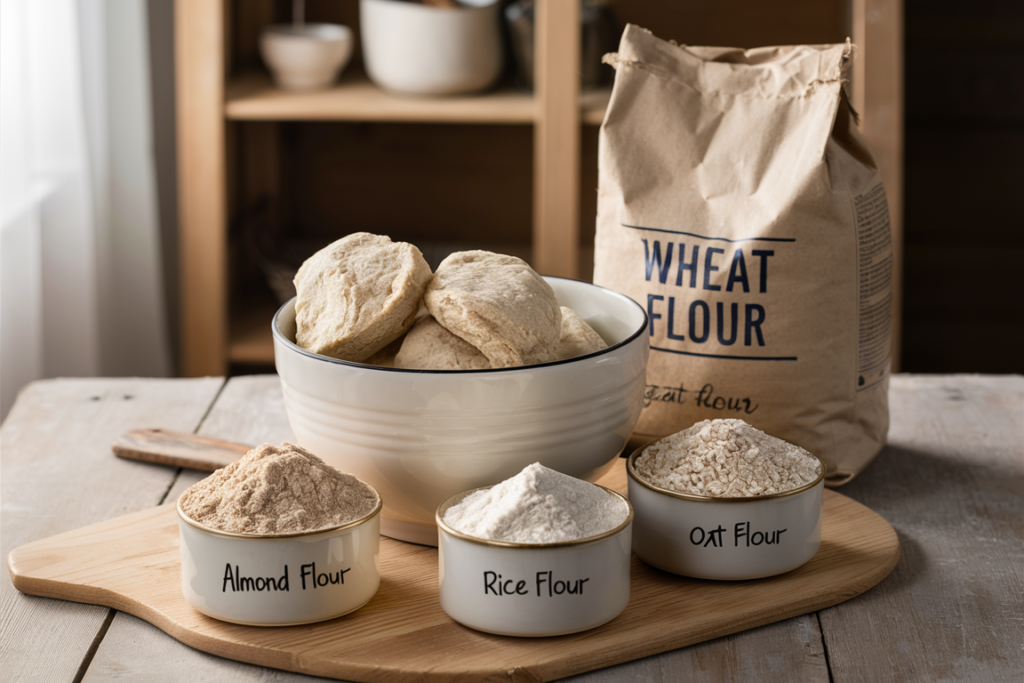
Who Eats Gluten-Free Biscuits?
While they are essential for those with gluten-related health concerns, gluten-free biscuits are also gaining popularity among health-conscious individuals. With a focus on natural, alternative ingredients, they’ve become a staple in many households seeking variety in their diet.
Stay tuned for Part 2, where we’ll delve into the taste and texture differences between gluten-free and traditional biscuits!
Part 2: Taste Differences Between Gluten-Free and Traditional Biscuits
How Texture Impacts the Eating Experience
One of the first things people notice about gluten-free biscuits is their texture. Gluten creates the airy, flaky layers we associate with traditional biscuits. Without it, gluten-free versions often lean toward a denser, slightly crumbly structure. Some might describe the texture as “grittier,” especially if coarser flours like rice flour are used. Yet, advancements in gluten-free baking techniques have made significant strides in closing this gap.
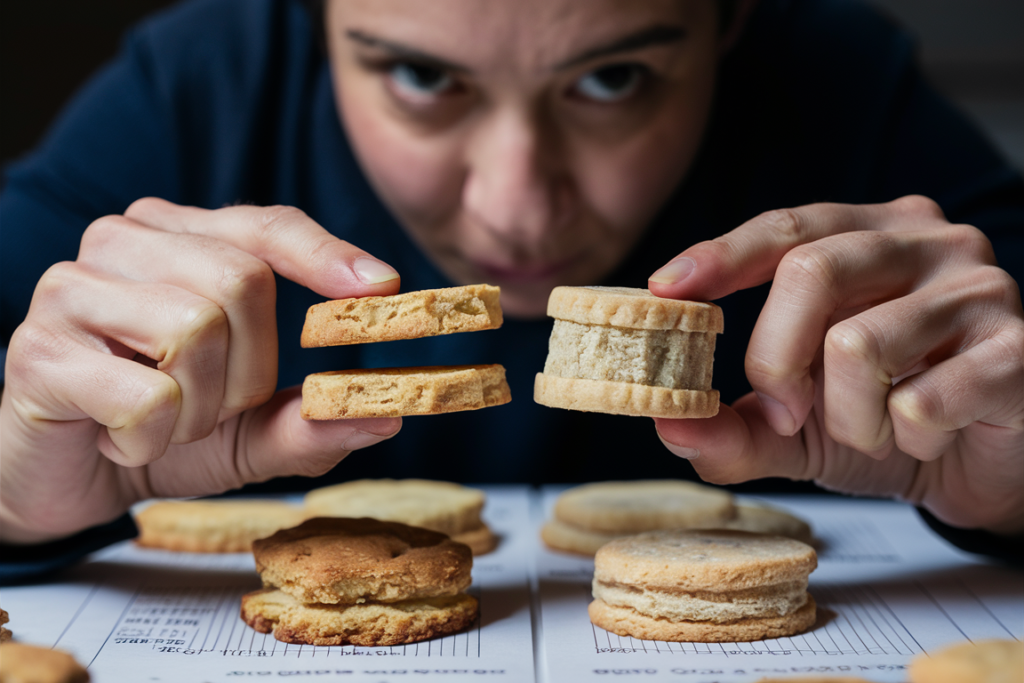
Learn more about how gluten impacts baking here.
Flavor Profiles: Subtle Yet Significant
Taste can be tricky to define, but there’s no denying that gluten-free biscuits have a unique flavor. Traditional biscuits, often made with wheat flour, have a mild, neutral base that allows buttery or savory toppings to shine. Gluten-free flours like almond flour or oat flour introduce distinct undertones—nutty, earthy, or even slightly sweet—which can alter the overall flavor profile.
Moisture Levels and Why They Matter
Another noticeable difference lies in moisture retention. Gluten-free biscuits may feel drier or become crumbly faster due to the absence of gluten’s binding properties. However, this isn’t always a dealbreaker; many recipes counteract this by adding extra fats like butter or incorporating ingredients like yogurt to lock in moisture.
Does “Different” Mean Worse?
Not at all! While gluten-free biscuits may differ in taste and texture, those differences can be delightful in their own way. It often comes down to personal preference, and for many, the distinct characteristics of gluten-free biscuits are worth embracing.
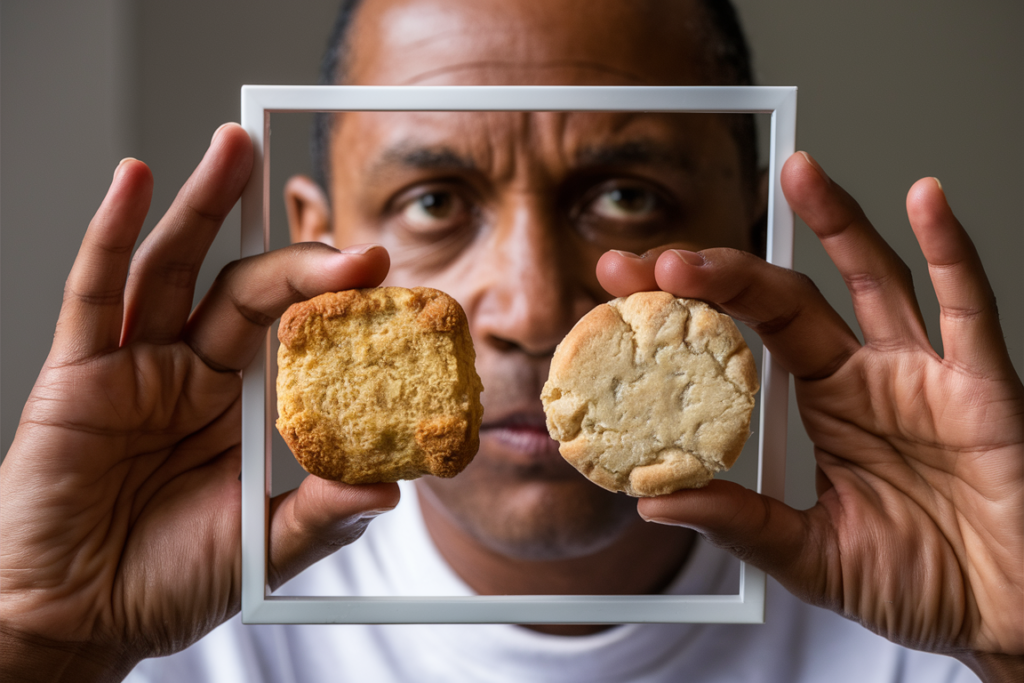
Next, in Part 3, we’ll dive into the factors that influence these taste differences, from the types of flour to the binders used
Part 3: Factors Influencing the Taste of Gluten-Free Biscuits
The Role of Gluten-Free Flours in Flavor and Texture
The type of flour you use significantly impacts how gluten-free biscuits taste. For instance:
- Almond Flour: Adds a subtle sweetness and a rich, nutty flavor. Ideal for biscuits with a sweeter profile.
- Rice Flour: Neutral in flavor but can feel slightly gritty if not finely milled.
- Oat Flour: A hearty, wholesome option with mild, toasty notes.
Each flour brings its own twist, making the choice of flour a key determinant of the biscuit’s overall taste.
Binders and Additives: Mimicking Gluten’s Magic
Without gluten, gluten-free biscuits rely on binders like xanthan gum and guar gum. These ingredients provide elasticity and help the dough hold its shape. While they don’t contribute much to flavor, they do impact the biscuit’s mouthfeel. Achieving the right balance is critical; too much xanthan gum, for instance, can make the biscuit overly chewy.
Sweeteners and Flavor Enhancers
To offset any unusual flavors from alternative flours, recipes often include sweeteners or additional flavorings. Maple syrup, honey, or vanilla extract can elevate the taste, while salt and butter help balance sweetness and bring richness. These choices play a vital role in creating a biscuit that rivals its gluten-filled counterpart.
External Resource: Discover tips for baking gluten-free biscuits at home here.
Experimentation: The Key to a Great Biscuit
Every baker has their tricks for perfecting gluten-free biscuits. By experimenting with flour blends, binders, and flavors, it’s possible to create biscuits that taste so good, you’ll forget they’re gluten-free.
Next, in Part 4, we’ll explore how consumers perceive and adapt to the unique taste of gluten-free biscuits.
Part 4: Consumer Perception and Acceptance of Gluten-Free Biscuits
What Do Blind Taste Tests Reveal?
Blind taste tests often highlight the subtle differences between gluten-free biscuits and their traditional counterparts. Participants frequently identify gluten-free versions as having a denser texture and a more pronounced flavor due to the alternative flours used. Surprisingly, many tasters enjoy these unique characteristics, especially when expectations are managed.
The Influence of Expectations on Taste
Believe it or not, psychology plays a huge role in how we perceive taste. When people hear “gluten-free,” they often expect a product to taste inferior or unusual. However, when approached with an open mind, many discover that gluten-free biscuits offer a satisfying flavor all their own.
Does Repeated Exposure Change Opinions?
It’s true: the more often you eat gluten-free biscuits, the more likely you are to enjoy them. This is especially true for those transitioning to a gluten-free diet due to health reasons. Over time, consumers adapt to the differences and may even develop a preference for the distinct taste and texture of gluten-free options.
Consumer Feedback and Trends
The growing popularity of gluten-free products reflects a shift in consumer attitudes. Today, brands are catering to demand by offering improved recipes and premium ingredients, which has helped reshape perceptions of gluten-free baked goods.
External Resource: Explore the advances in gluten-free baking here.
Coming up in Part 5, we’ll dive into how bakers are improving the taste and quality of gluten-free biscuits.
Part 5: Improving the Taste of Gluten-Free Biscuits
Innovations in Gluten-Free Baking
The world of gluten-free baking has come a long way, thanks to innovation and experimentation. Bakers and food scientists have developed new flour blends and techniques that mimic the elasticity and fluffiness of gluten-based biscuits. Advances in milling technology have also improved the texture of alternative flours, reducing the grittiness often associated with early gluten-free recipes.
For example, some brands now combine rice flour, tapioca starch, and potato starch to create a versatile base that works well in biscuit recipes. These blends achieve a balance of lightness and structure, making it easier to craft gluten-free biscuits that rival their traditional counterparts.
Tips for Making Better Gluten-Free Biscuits at Home
Making delicious gluten-free biscuits at home doesn’t have to be a challenge. Here are some tried-and-true tips:
- Use a Blend of Flours: Instead of relying on one type of flour, mix several to balance texture and flavor.
- Don’t Skip the Binders: Ingredients like xanthan gum or psyllium husk powder are essential for structure.
- Add Extra Moisture: Gluten-free doughs can dry out quickly, so incorporating yogurt, sour cream, or even an extra egg can help.
- Rest the Dough: Allowing the dough to rest before baking helps hydrate the flours, improving the texture.
Selecting the Best Store-Bought Options
For those who prefer convenience, the market is filled with high-quality gluten-free biscuit options. Look for brands that use premium ingredients and avoid artificial additives. Reading reviews and trying a few different products can help you find a biscuit that suits your taste.
Challenges and Solutions in Commercial Baking
Even large-scale manufacturers face hurdles when producing gluten-free biscuits. Issues like shelf stability and consistency require careful formulation. However, with rising consumer demand, companies continue to refine their recipes, resulting in biscuits that taste better than ever.
In Part 6, we’ll address some of the most frequently asked questions about gluten-free biscuits, from their flavor to how they’re made.
Part 6: Frequently Asked Questions
Do Gluten-Free Biscuits Taste Different from Regular Biscuits?
Yes, gluten-free biscuits often taste different from regular biscuits due to the absence of gluten, which influences both flavor and structure. Gluten-free biscuits tend to have more pronounced flavors, depending on the alternative flours used, such as almond or oat flour. They may also have a denser or slightly crumbly texture compared to the soft, elastic quality found in traditional biscuits. However, these differences are not necessarily negative—they simply create a unique eating experience.
Can Gluten-Free Biscuits Be as Fluffy as Traditional Ones?
Absolutely! With the right ingredients and techniques, gluten-free biscuits can achieve a fluffiness comparable to traditional ones. The secret lies in a balanced flour blend, adequate leavening agents, and proper hydration. Resting the dough before baking is another helpful tip, as it allows the flours to absorb moisture fully, creating a lighter, more cohesive crumb. Modern recipes and gluten-free baking advances have made it easier than ever to bake biscuits that are just as soft and airy.
What Are Common Ingredients in Gluten-Free Biscuits?
Gluten-free biscuits commonly include flours like rice flour, almond flour, or potato starch. These flours are often blended to achieve the right balance of flavor and texture. Binding agents such as xanthan gum or guar gum are used to replicate gluten’s structural properties. Additional ingredients like eggs, yogurt, or buttermilk enhance moisture and richness, while baking powder ensures the biscuits rise properly. For flavor, sweeteners such as honey or vanilla extract are also frequently included.
Are There Any Health Benefits to Choosing Gluten-Free Biscuits?
For individuals with celiac disease or gluten sensitivities, gluten-free biscuits are essential for avoiding adverse health effects. However, for the general population, there isn’t strong evidence to suggest significant health benefits from gluten-free products. That said, gluten-free biscuits often incorporate alternative flours that are higher in nutrients, such as almond flour or oat flour, which can add some dietary variety. Nonetheless, it’s important to choose options with minimal processed additives to ensure a healthier choice.
How Can I Make My Gluten-Free Biscuits Taste Better?
Enhancing the taste of gluten-free biscuits involves a bit of experimentation. Start by blending complementary flours, such as almond and oat flour, for a richer flavor. Adding extra butter or cream can improve both flavor and texture. Spices like cinnamon or nutmeg, or sweeteners like maple syrup, can elevate the taste. Moreover, following trusted recipes and paying attention to small details, such as resting the dough, can result in biscuits that are undeniably delicious.
Do All Gluten-Free Biscuits Taste the Same?
Not at all! The taste of gluten-free biscuits can vary widely depending on the ingredients and preparation methods used. Some recipes emphasize sweeter flavors with nut-based flours, while others aim for a more neutral taste with rice flour blends. Texture also plays a role, with some biscuits leaning toward a softer crumb and others being firmer or flakier. The diversity in recipes means there’s a gluten-free biscuit to suit nearly every palate.
In Part 7, we’ll wrap up with some final thoughts on the evolving world of gluten-free biscuits and what the future holds for their taste and quality.
Part 7: The Future of Gluten-Free Biscuits
The Evolving Landscape of Gluten-Free Baking
Gluten-free biscuits have come a long way from their early days of gritty textures and lackluster flavors. Thanks to innovations in food science and a growing demand for better gluten-free options, bakers and manufacturers continue to push the boundaries of what’s possible. From experimenting with ancient grains like millet and sorghum to refining blends of tapioca starch and almond flour, the gluten-free baking world is brimming with creativity.
Advancements in milling technology and new stabilizers have also helped improve the consistency and shelf-life of gluten-free biscuits. This progress means that consumers can enjoy biscuits that not only rival traditional ones in taste and texture but also offer unique characteristics that make them stand out.
Embracing the Unique Taste of Gluten-Free Biscuits
One of the most exciting aspects of gluten-free biscuits is their diversity. While traditional biscuits rely on the uniformity of wheat flour, gluten-free versions invite experimentation. Whether it’s the nuttiness of almond flour, the heartiness of oat flour, or the neutral base of rice flour, there’s a gluten-free biscuit for every occasion and taste preference.
Consumers are increasingly appreciating these differences, viewing gluten-free biscuits as a culinary experience rather than a substitute. By embracing their unique qualities, gluten-free biscuits have carved out their own niche in the world of baked goods.
What Lies Ahead for Gluten-Free Biscuits?
The future looks bright for gluten-free biscuits. As consumer awareness grows, demand for higher-quality and more varied gluten-free products will continue to rise. Innovations like enzyme technology, which enhances dough elasticity, or the use of bio-engineered flours, may soon bridge any remaining gaps between gluten-free and traditional biscuits.
Moreover, as the gluten-free community expands, we can expect even more creative recipes and blends that cater to diverse dietary needs and preferences. From savory herb-infused biscuits to sweet chocolate chip varieties, the possibilities are endless.
Final Thoughts
While the question “Do gluten-free biscuits taste different?” might spark curiosity, the answer is far from one-size-fits-all. Yes, they taste different, but in a way that opens up a new world of flavors and textures for biscuit lovers. Whether you’re seeking a healthier option, managing dietary restrictions, or simply curious, gluten-free biscuits offer an experience that’s well worth exploring.
